Conquerors: Roots of New World Horsemanship by Dr. Deb Bennett
$49.95
3 in stock (can be backordered)
Product Description
Yearning for a horse book rich with delicious tales? Looking for a solidly-researched volume on the history of horsemanship? Whether you rein a Quarter Horse, travel on a Tennessee Walker, breed for color, ride a smooth Paso, or admire the Andalusian, Dr. Deb Bennett’s new book is certain to engage your interest. Truly a feast of little-known facts, “Conquerors— The Roots of New World Horsemanship” cogently links the traditions of the ancients with the cattle-handling methods of the conquistadors, gauchos, vaqueros, and cowboys of the New World.
No matter how you ride, you have probably heard of the hackamore as a piece of training equipment. But did you know that its history threads back through California to Mexico, Spain, and North Africa to the ancient kingdom of Persia? Or that once upon a time, before Mexican craftsmen discovered how to manufacture a working saddle horn, vaqueros tied their ropes hard and fast to their cinches— or to their horses’ stout tails?
Lest you think that Spanish horsemanship involves only the “Western” rider, there are important chapters exploring the links between hunting, gaited riding, dressage, reining, cutting— and mounted bullfighting. Beginning with Columbus’ second voyage in 1493, the seeds of all of these were ferried across the Atlantic to the Americas. Bennett surveys Old World riding styles, saddle making traditions, arms and armor not as isolated “phases” in the development of modern horsemanship, but to uncover the roots of the Spanish and Portuguese attitudes, beliefs, and technology which gave rise to current American practices. Linking the knights of old with the knights of the plains, Bennett provides convincing proof that “communicating with horses” is as old as the first attempt to bring this magnificent animal into domestication.
Necks arched, manes flying, eyes flashing, the horses occupy center stage throughout. Of great interest to the horse breeder, Bennett charts the natural origin of major world bloodlines, following up with hundreds of photographs showcasing more than 40 living and antique types of horse. Both “gaited” and trotting lines are represented— and not merely Andalusians, Pasos, and Appaloosas, but the rarely mentioned Azteca, Criollo, Mangalarga, Campolina, Corallero, Mustangs, and Baguales. With an extensive index and bibliography, here is an invaluable reference to the places and dates of first importation for every country in the Western Hemisphere that has ever bred horses of Iberian ancestry. Easy to read yet packed with pictures, maps, and information, this much-needed volume is a classic which for many years to come will continue to feed horsemens’ hunger to know.
About the Author
In pursuing a lifelong fascination with horses, Deb Bennett’s Ph.D. in Paleontology has carried her through time from prehistory to study of living breeds. A former staff member of the Smithsonian Institution, she acted as researcher for the prestigious Columbus Quincentenary exhibition Seeds of Change. Author of the three-volume Principles of Conformation Analysis, “Dr. Deb” is a long-time consulting editor for Equus and Conquistador magazines, and maintains a busy international schedule of horsemanship seminars and clinics. Current Director of the Equine Studies Institute, she owns, rides, and trains horses in California.
(hardcover, photos, illustrations, 410 pgs.)
Excerpt from the book:
Pedro Romero, the most renowned Spanish matador of all time, held out for his pupils three guiding principles: parar, mandar, and templar — which translates “stand your ground; hook him on to direct him; and then rate his as you will.”
For centuries, Spain fostered two distinct “seats” or riding styles: a la jineta, the light-armored bowman’s or lance-raider’s style, and a la brida, the knightly style. In the first, the horseman riders with his ankles fellow his hips, with his feet beneath him as he would if he were standing or squatting on the ground, identical to the modern “balanced seat” style. The brida horseman, by contrast, rides with his feet “on the dashboard” and his weight on the back of his fanny. Today this style has no specific name. However, “feet on the dashboard” are still characteristic of British steeplechase jockeys and a century ago the style was still considered the “proper” form over a fence. In the Americas today, a seat indistinguishable from brida is very widely employed by pleasure and gaited-horse riders.
3 reviews for Conquerors: Roots of New World Horsemanship by Dr. Deb Bennett
You must be logged in to post a review.
Related products
-
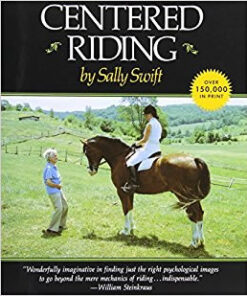
Centered Riding by Sally Swift
5.00 out of 5$39.95 Add to cart -

Centered Riding 2: Further Exploration by Sally Swift
5.00 out of 5$29.99 Read more -
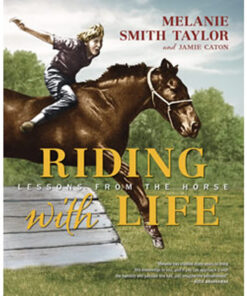
Riding with Life by Melanie Smith Taylor and Jamie Caton
5.00 out of 5$32.95Brands:Melanie TaylorAdd to cart -
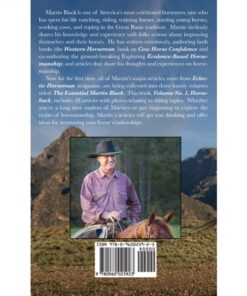
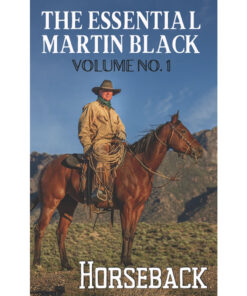
The Essential Martin Black ~ Volume No.1 Horseback
0 out of 5$18.95Brands:Martin BlackAdd to cart -
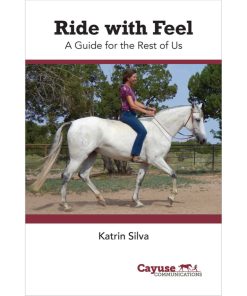
Ride with Feel: A Guide for the Rest of Us by Katrin Silva
0 out of 5$19.00Brands:Katrin SilvaRead more




Laurie Merrell –
Dr.Deb gives us in this beautiful big book an amazing history of horses and horsemanship through the ages. She goes into great depth about the history of our modern horse breeds and the ways in which we ride that give wonderful insight in how we got to where we are today. I was especially interested in the evolution of tack, from the jaquima or hackamore, to the saddles that were developed for the styles of riding and “seats” from ancient history to present. Her level of knowledge about horses is incredible. I’ve read everything I could put my hands on by her, learned so much, and this book is a work of art.
Sandy Mckay –
Conquerors, The Roots of New World Horsemanship, is an incredible book. Not only does Dr. Deb Bennett demonstrate that the root of new world horsemanship, is old world horsemanship, she shows how horses have developed and been bred to achieve different purposes throughout the ages, and how different riding styles and equipment developed for these purposes. It was quite a surprise to learn that the ambling, or gaited horse was the preferred riding horse hundreds of years ago.
The history of how horses came to North and South America is riveting, and one gets a sense of the development, by natural selection, of very tough horses that required true horsemanship skills to be educated.
This book is not to be skimmed over, but to be read slowly and deliberately, in order to fully appreciate the depth and breadth of information that it contains.
Ali Pullin –
Conquerors is a very detailed, deep and well researched book. It delves heavily into the history of horse breed development, as well as saddle/shoe development and horsemanship styles.
This is not a light read! This is definitely a book for the student of horsemanship who would like a greater understanding of where/why horses breeds developed, how riding was influenced, and the modern day results. Dr Deb’s experience an educator really comes through breaking the information down in an understandable logical manner. Be prepared to read this book with a highlighter and pen, as there are many pieces of the horsemanship puzzle that you will want to remember.